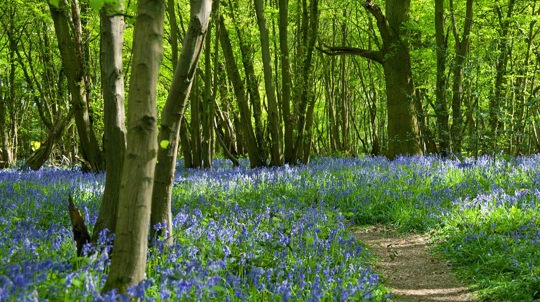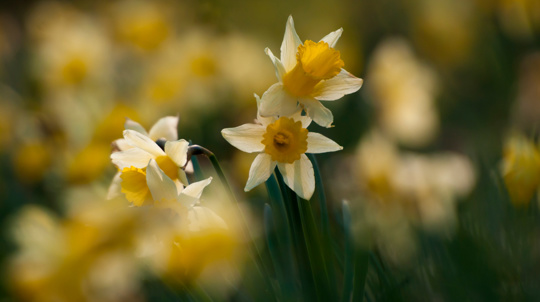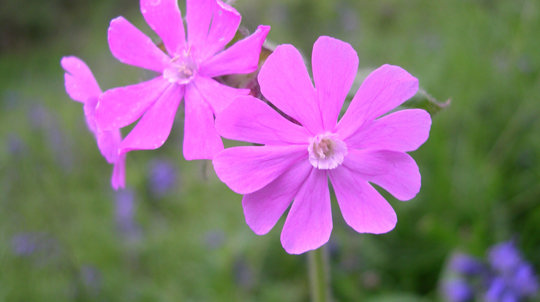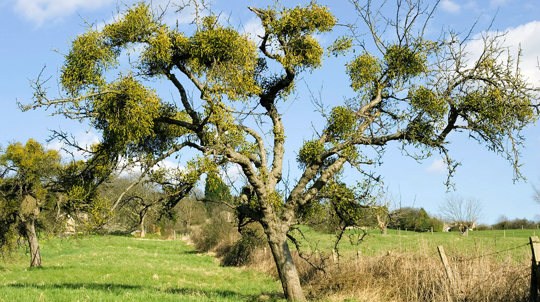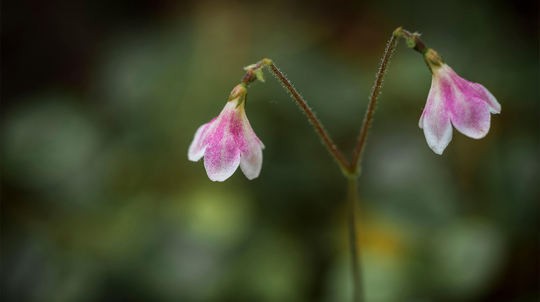Lesser bladderwort doesn’t have roots. Instead, it floats freely in peaty pools in raised bog habitats.
9 carnivorous plants to spot in the UK

Digital Content Manager
Our thoughts might fly to tropical Venus flytraps and pitcher plants when we think of meat-eating flora and fungi, but you’ll be surprised to learn we have carnivorous plants in the UK too.
While some UK plants are carnivorous in the sense that they actively catch and consume prey, others are parasitic – stealing nourishment from a living host, much like a vampire!
What is the difference between a carnivorous plant and a parasitic plant?
Carnivorous plants eat flesh – in the UK, that means invertebrates. The plants use an ingenious array of adaptations to catch their prey, from sticky filaments to underwater bladders. Parasitic plants, on the other hand, mine nutrients from a living organism. In the UK, this means another plant, including grasses and trees. The parasitic plant usually steals its nourishment using its roots.
For carnivorous plants, their meaty meals are an extra course on top of photosynthesis – the way that regular plants produce food using sunlight. For many of the UK’s parasitic plants, however, the nutrients they draw from other plants is their sole food source as they can’t photosynthesise.
Types of carnivorous plants in the UK
The UK’s carnivorous plants are specialists, mostly found in wet, boggy environments.
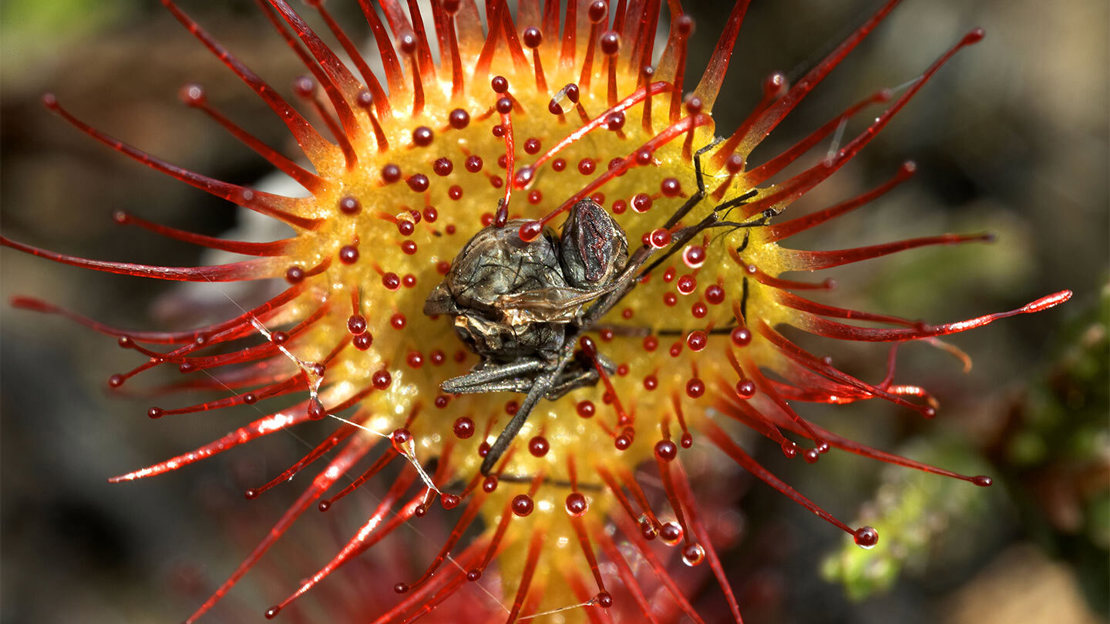
Round-leaved sundew (Drosera rotundifolia)
The leaves of round-leaved sundew are covered in tendrils tipped with sticky droplets. When an unsuspecting insect lands on the plant, it gets stuck to the tendrils, which then curl inwards to ensnare it. Eventually, the whole leaf wraps around the insect, which is dissolved and digested by special enzymes released by the sundew.
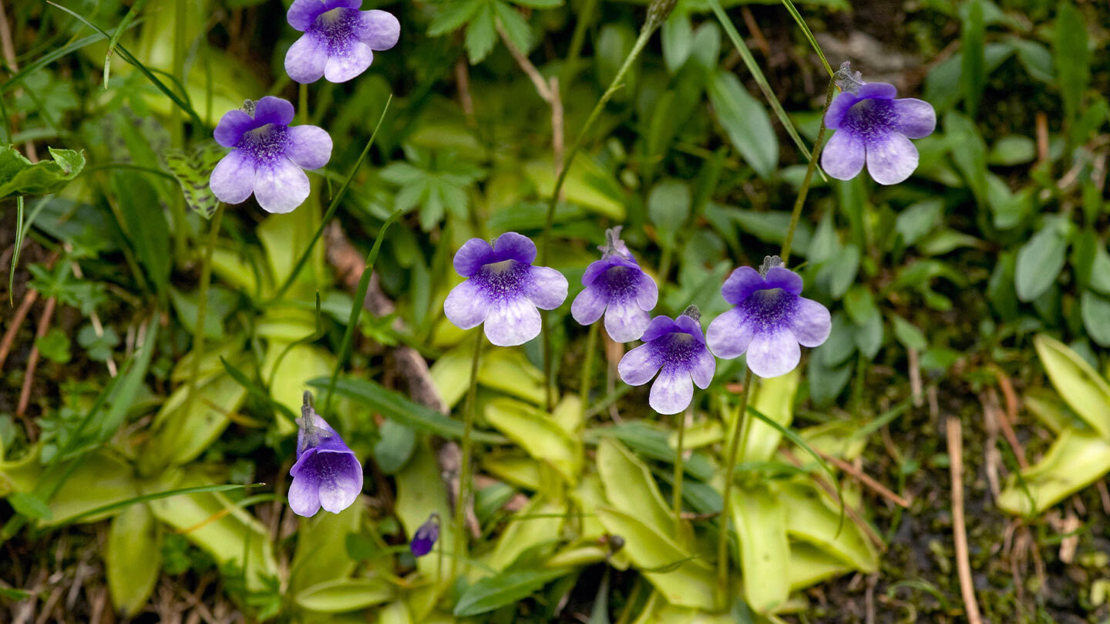
Common butterwort (Pinguicula vulgaris)
Beautiful but deadly, common butterwort lies in wait for insects on damp heaths, acidic bogs and fens. It has a star-shaped rosette of cup-shaped leaves at its base which secrete a slippery, sticky fluid from special glands atop tiny hairs. When an insect lands, it can’t escape, and an additional set of glands produce digestive enzymes which break the insect down into a soup, leaving just the exoskeleton behind.
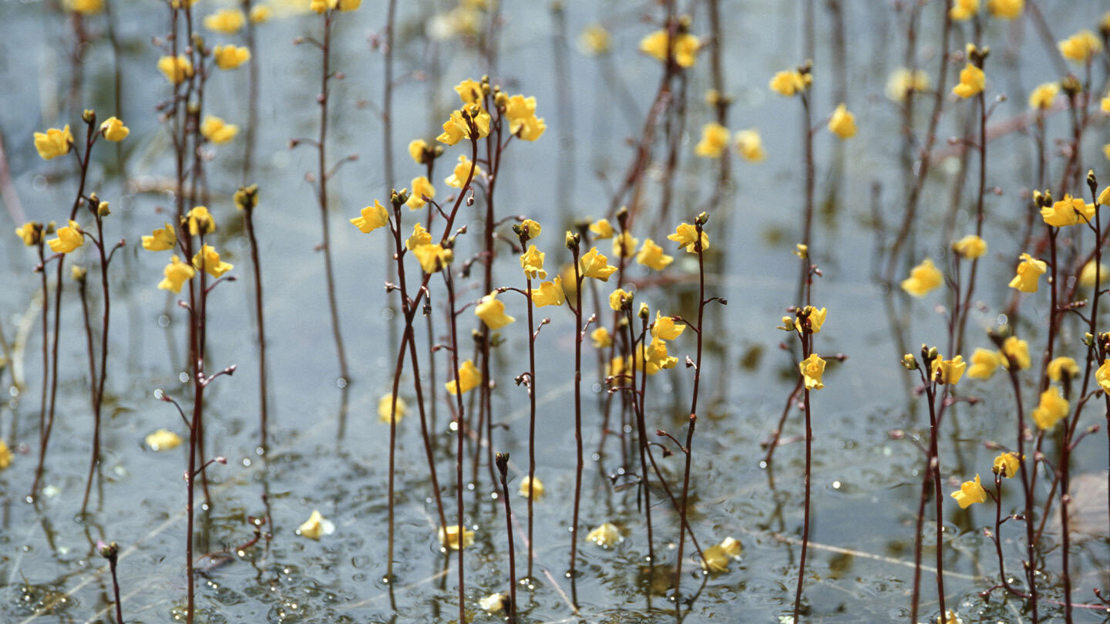
Lesser bladderwort (Utricularia minor)
Meet the fastest plant in the west! Lesser bladderwort captures small freshwater invertebrates in 1/10,000th of a second using tiny bladders on its stems. Each bladder is covered in miniscule hairs – when an invertebrate touches these, it triggers the bladder to snap open a trap door that sucks the animal in before closing again and trapping it. The prey is then slowly dissolved by enzymes and absorbed by the plant.
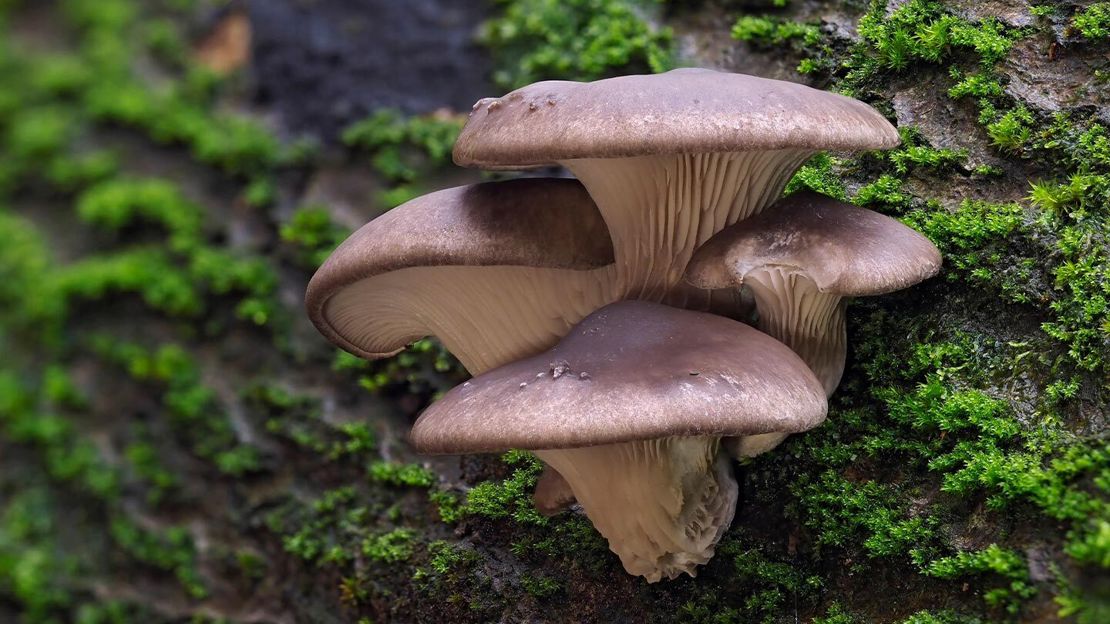
Oyster mushroom (Pleurotus ostreatus)
This innocuous-looking mushroom might be a fungus rather than a plant, but it deserves a mention. It grows on the stumps and fallen wood of deciduous trees including beech, but it isn’t strictly vegetarian. Alongside its woody diet, the oyster mushroom kills and consumes nematode worms.
The mushroom’s hyphae (the strands that make up its mycelium network) are covered in tiny balls. When a nematode brushes up against one, it bursts, releasing a lethal nerve agent called 3-octanone that paralyses and kills the worm. The hyphae then work their way into the carcass, dissolve its innards and suck them out.
Types of parasitic plants in the UK
Mistletoe isn’t the only parasitic plant in the UK. Other vampires reside in our woods and meadows, using their roots to steal nourishment from the roots of other plants or trees.
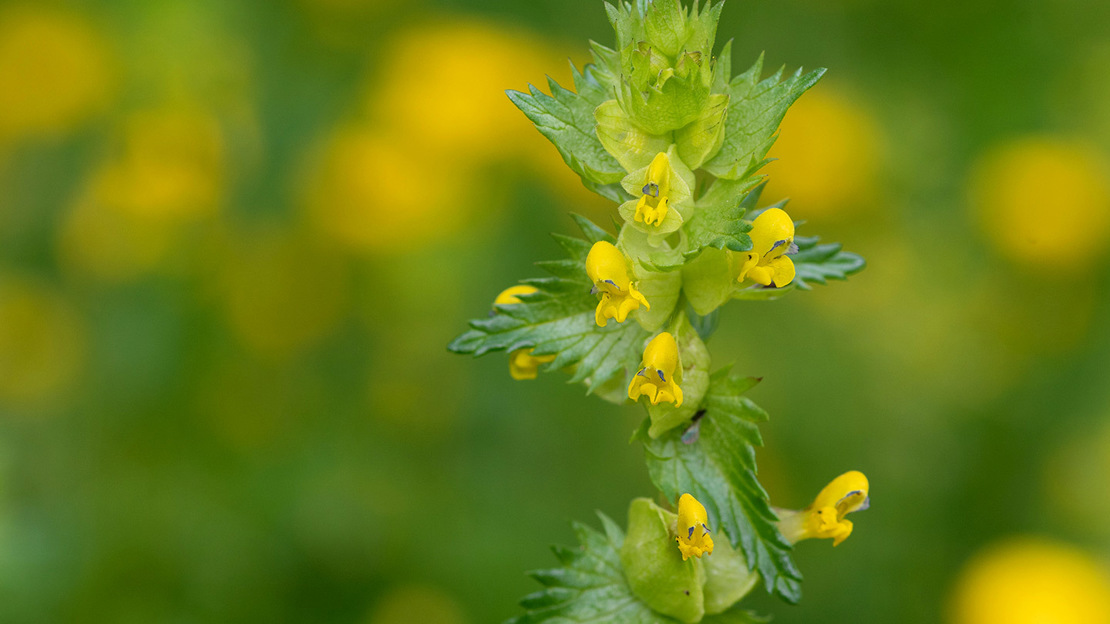
Yellow rattle (Rhinanthus minor)
Yellow rattle’s vampiric lifestyle has earned it a reputation as the ‘meadow maker’. It’s a hemi-parasite – meaning it’s partially parasitic. While the plant gets some of its nutrients through photosynthesis, it’s happiest when leaching others from nearby grasses.
Yellow rattle is particularly fond of course grasses that can quickly overwhelm a wildflower meadow if left unmanaged. By keeping the grasses under control, delicate wildflowers including vetches and even orchids have room to grow.
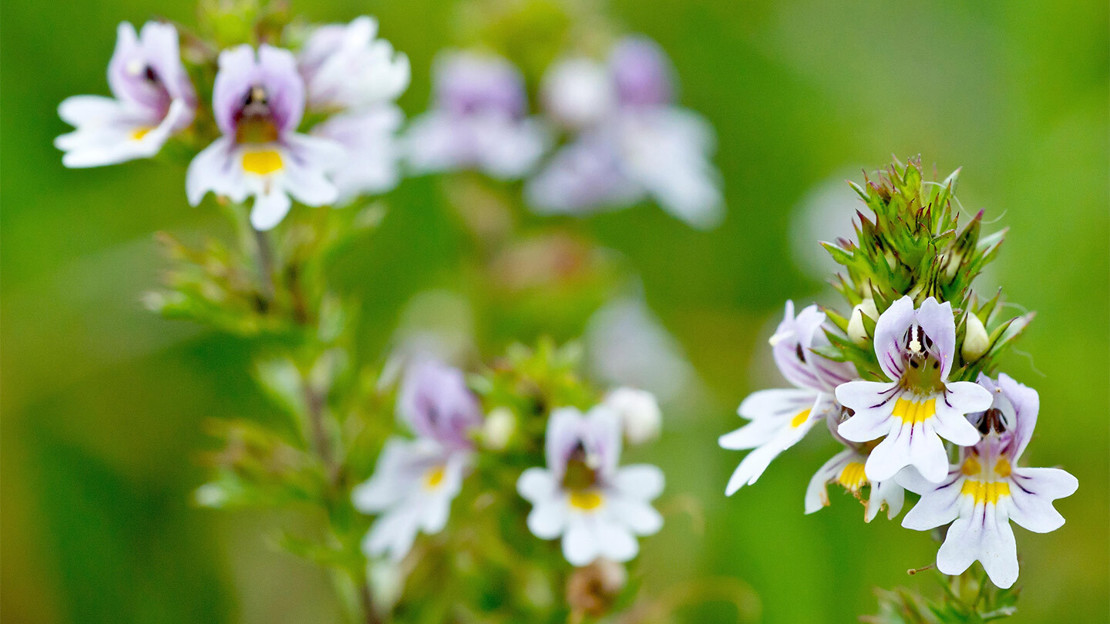
Common eyebright (Euphrasia spp.)
Common eyebright is also a hemi-parasite and, like yellow rattle, feeds on vigorous grasses.
Eyebright species grow low to the ground in short grasslands like heaths, meadows and downlands. They’re tricky to identify, with about 20 species in the UK plus around 60 hybrids!
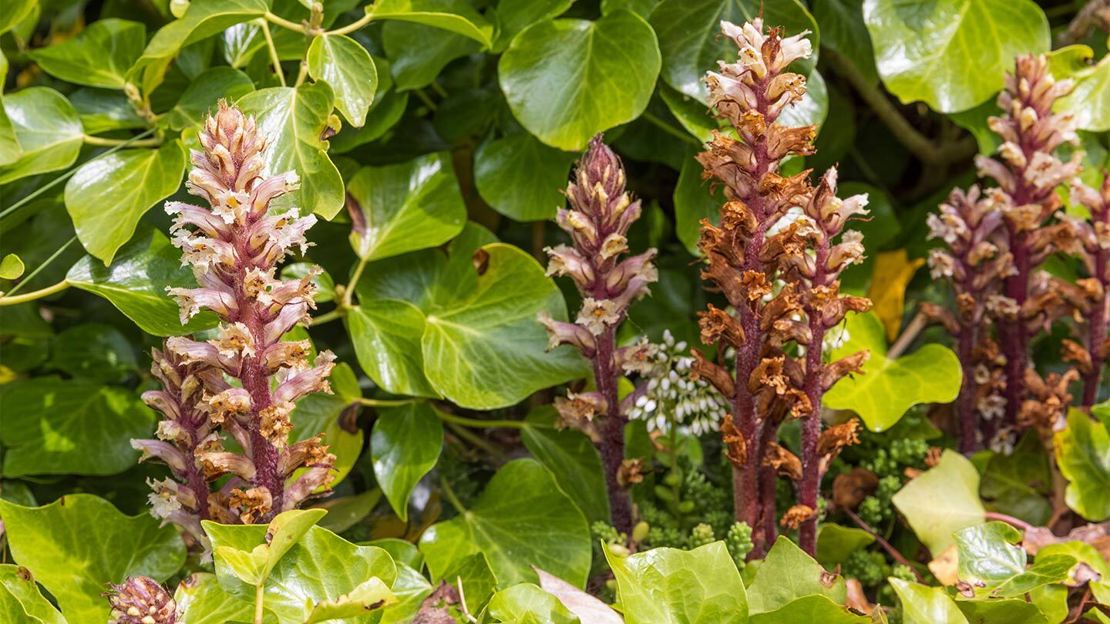
Common broomrape (Orobanche minor)
You’d be forgiven for walking right past this sickly-looking plant. Common broomrape completely lacks chlorophyl, which has left it with shrivelled-looking leaves and no way to photosynthesise. It gets its nourishment elsewhere – namely, other plants.
Different species of broomrape are named after their different hosts – for example, thyme broomrape and ivy broomrape. Common broomrape isn’t as fussy, with hosts including clovers, wild carrot, and members of the daisy and pea families.
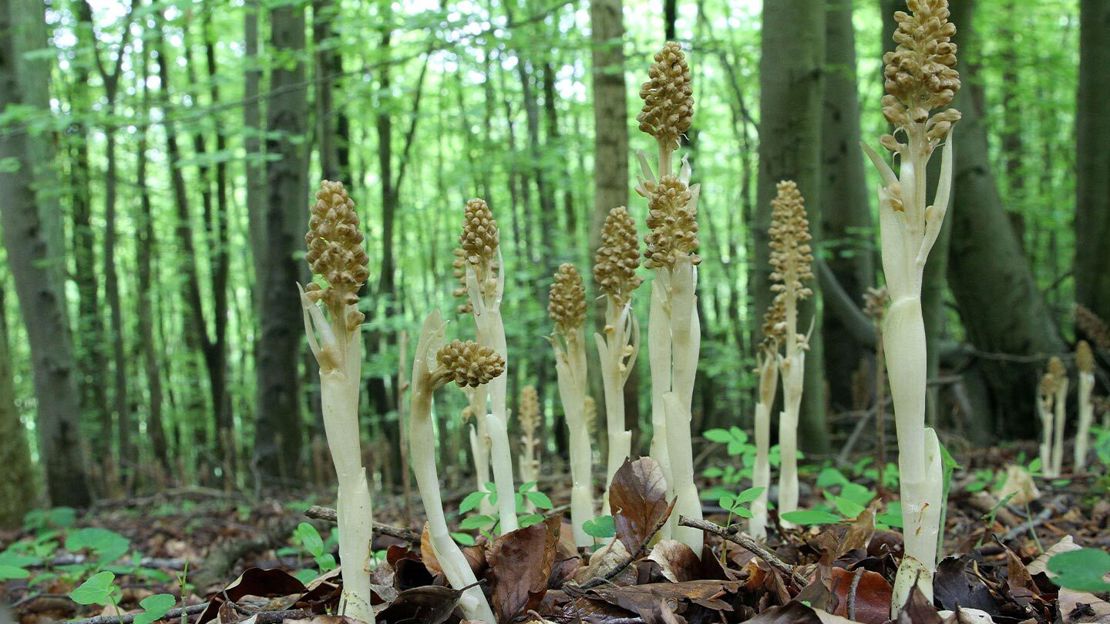
Bird’s-nest orchid (Neottia nidus-avis)
Just when you thought it couldn’t get stranger than common broomrape, along come the sallow spikes of the bird’s-nest orchid. It gets its name from its nest-like tangle of roots, which it uses to steal energy not from other plants, but from fungi. Bird’s-nest orchids are usually found in broadleaved woods and seem fond of beech woods in particular.
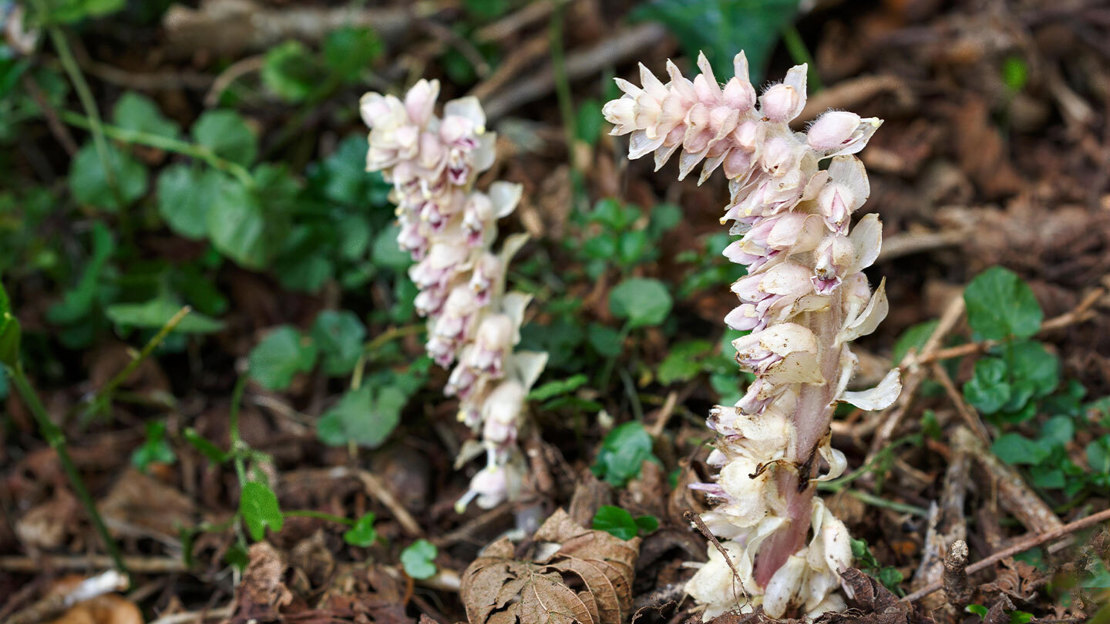
Common toothwort’s scientific name, Lathraea, comes from the Greek word for 'clandestine' or 'secret', because it spends most of the year underground.
Common toothwort (Lathraea squamaria)
Common toothwort sticks out like a sore thumb when it emerges alongside delicate bluebells and wood anemones in spring. It’s common name comes from the stack of tooth-like flowerheads that crowd its stem.
Like the bird’s-nest orchid and common broomrape, this woodland dweller doesn’t have chlorophyll to help it make its own food, so steals energy from elsewhere. It uses special suckers on its roots to feed from trees including hazel, elm, beech and lime.
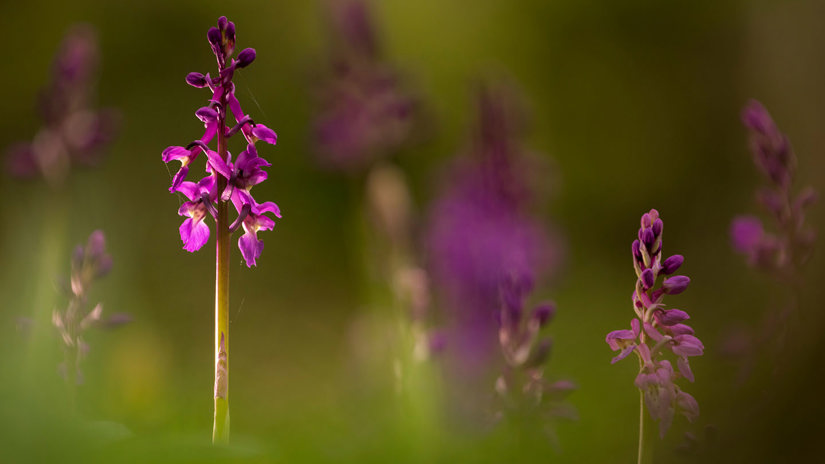
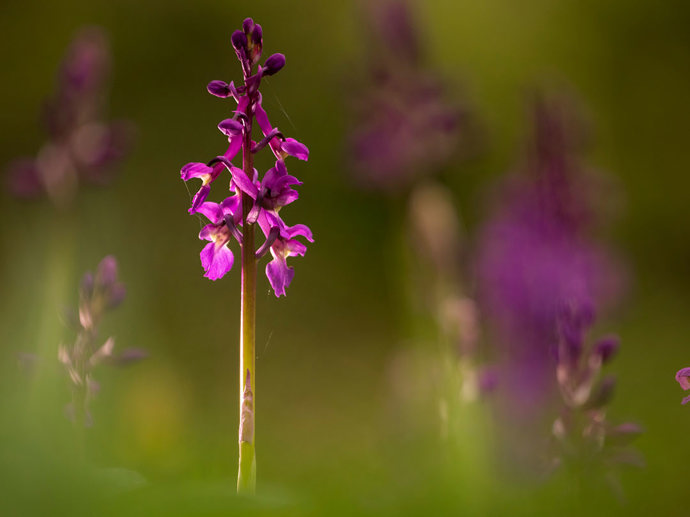
Enter a secret garden
From parasitic plants to wonderful wildflowers to towering trees, our woods are full of life – and they’re all free for you to visit.


